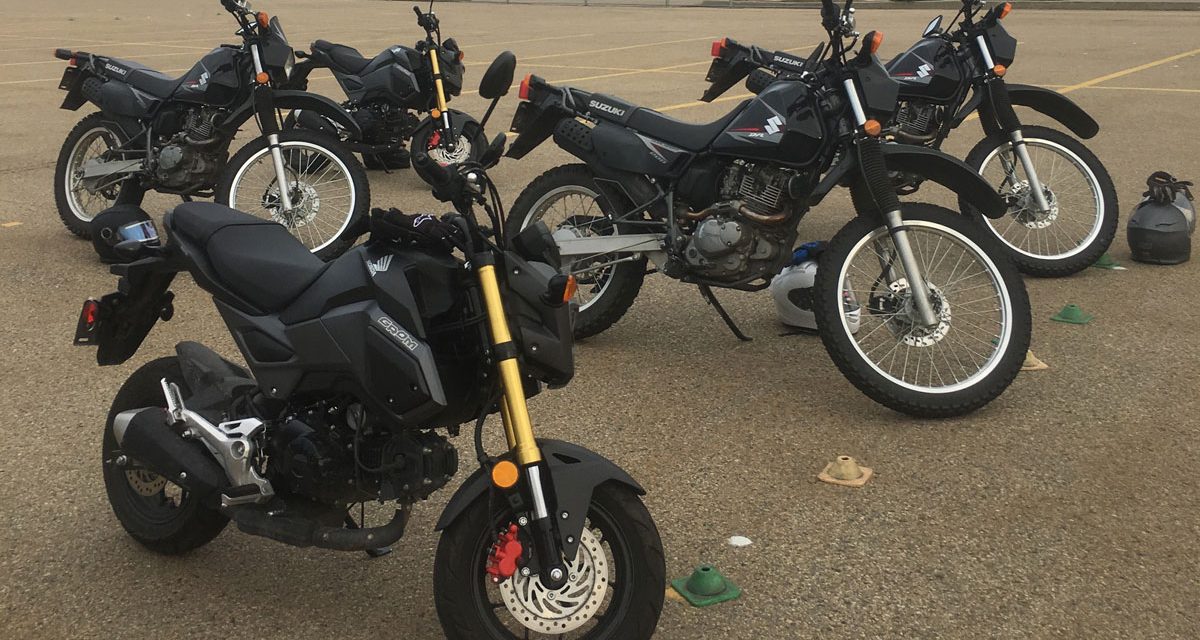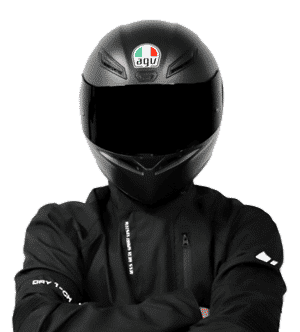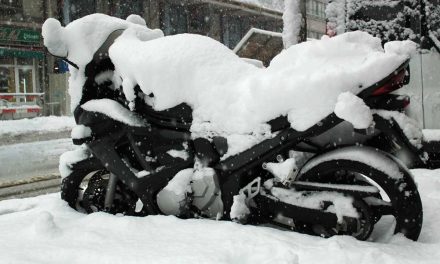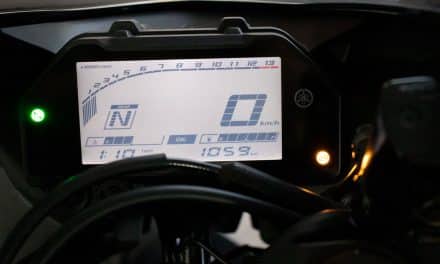After wanting to obtain a motorcycle license, I wondered if a Motorcycle Safety Course was worth it.
One of the most difficult decisions to make when trying to obtain your motorcycle license is whether to take a Motorcycle Safety Course. After a little bit of research, I decided to take a course. Was it worth it? Yes! The Motorcycle Safety Course was well worth the investment. It was one of the best decisions I’ve made in my life but not for the reasons you may think. Let’s look into how it helped me become a better rider and how it can help you.
What is a Motorcycle Safety Course?
A motorcycle safety course is a training program geared towards helping people who are interested in learning how to ride a motorcycle in a safe environment. It allows you to see if you actually enjoy riding a motorcycle or have the ability to ride without needing to purchase a motorcycle.
The courses are typically 2 days long in which there are both on-course and in-class training sessions. Having both theory and practical knowledge helps to fully allow the student to understand how to ride a motorcycle along with the rules of the road.
The course that I took my road training at is called TNT Motorcycle Rider Training. The program was spread over two days between on-bike and in-class sessions. I’ll be going over my experience below and answering some questions that you may have while researching your course.
What to look for when choosing a Motorcycle Safety Course?
Research is a must when you’re looking where to take your motorcycle safety course. You’ll be paying for it and you want to get your money’s worth. There are a few ways to see if the company is reputable and the experiences others have had. Let’s guide you through how to research your course.
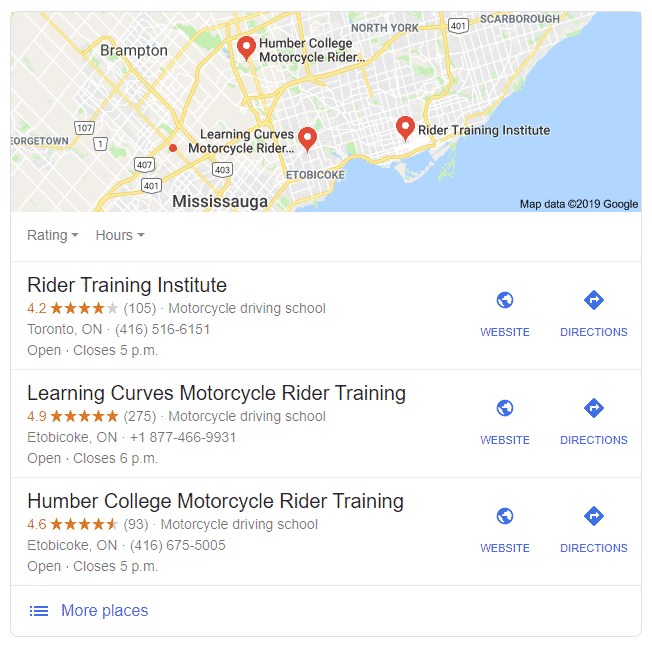
Google is in the business of helping you find relevant information related to your search query.
Do a quick Google search online to see which companies are in your area and some of the reviews of the company. A great resource is the Local Pack on Google. Scan through the reviews and see what the experiences of others are.
If the company has a couple of bad reviews, don’t worry. Just be sure that the company has responded and resolved the issue.
Website
Once you’ve found a couple of companies, check out their websites. There will be a lot of information on them to go over what to expect, time slots, locations, pricing and various other resources.
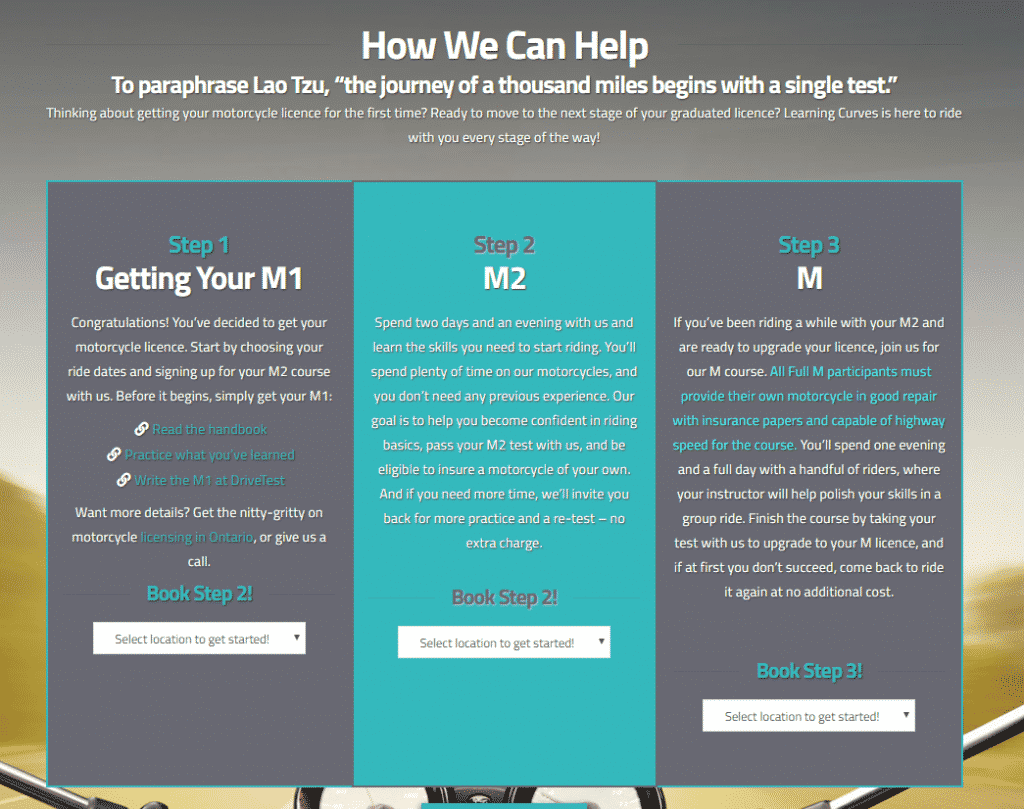
Be sure to look into the instructors they have. If they don’t have any listed, that could be a big red flag. You want to learn from someone who has a lot of experience riding.
What type of motorcycles do they use? Are you going to be riding on dirt bikes or 5 year old motorcycles that lack the latest technology? You must ask yourself what you would like to learn on. If they don’t have their inventory of motorcycles listed, give them a call and ask.
What dates are available and are they at a location that’s close to you? If they don’t have the dates available online or the locations, give them a call.
Do they have any other education materials available?
Take a look into the pricing and payment methods as well. Most reputable companies will make this process seamless and easy for you to sign up.
Once you’ve made the choice, book your motorcycle course! Wait for the material to arrive in your email and get ready to experience life of the open road.
What to expect from the Motorcycle Safety Course?
Booking
The expectation that I had for the course was speculative at best. I was pleasantly surprised by the professionalism and overall experience I had at TNT.
The experience started as soon as I hit the “complete booking” button during the checkout process. Immediately, I was emailed a list of items that I will need to purchase prior to coming to the course as well as educational material with a quiz.
A prerequisite to participate in the course was to pass the quiz in order to start the on-bike training. The information provided was of excellent quality. I studied the material, passed the exam and then I started the research what I motorcycle equipment I needed to bring.
Gear
Depending on the Province or State that you will be taking your motorcycle training, they may require different types of gear for you to wear during your motorcycle training course.
Some motorcycle training courses will allow you to rent gear. This can be a very helpful option for people who don’t have any riders in their family or don’t want to invest in gear before actually riding a motorcycle. Be sure to ask the company if this is an option or review their website for more details.
Below, we will be going over the gear I purchased when taking my motorcycle training course as well as some recommendations based on my research.
Helmet
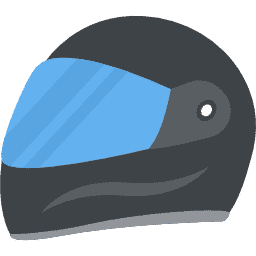
You have two choices – Buy or Borrow.
*Before you start doing your research, review the course training material to see if your helmet has to be a specific type or be approved by DOT, ECE, or SNELL.*
BUY – If you’re looking to buy your helmet, be sure to look at reviews online and information on trusted resources like RevZilla.com or Fortnine.ca.
Pick out a few helmets you would like to try on then head over to your local motorcycle equipment store or dealership.
Once there, be sure to ask to try on the helmets. Make sure the person who you are dealing with is knowledgeable about helmet shapes and features. Leave the helmet on for at least 30 minutes to see if there are any areas of the helmet that irritate or press on your head. I can’t stress this enough. Depending on your head shape, certain helmets will feel uncomfortable.
If you wear glasses, try them on with the helmet to ensure it is comfortable.
Once you’ve found the right helmet, purchase it either online or from your local shop! Price matching is a great opportunity here.
Borrow – If the helmet looks damaged, do not borrow it. Ask your friends and family to see if someone has a helmet you can borrow for a couple of days to take your motorcycle safety course.
I would highly recommend a full face helmet when taking the course as accidents do happen and your head is fully secure. Bugs are prevalent in parking lots.
I decided to purchase an AGV K1 helmet prior to taking my motorcycle safety course. I highly recommend this helmet for new riders.
Gloves
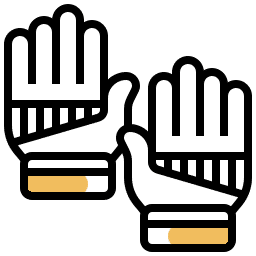
Gloves are one of the most important pieces of gear next to your helmet. I am currently typing this article on my laptop and without my hands, I wouldn’t be able to. Your hands are one of the most important things you need and protecting them should be a priority.
Once again, just like the helmet, go online and research the different types. Check out Fortnine.ca and RevZilla.com to find some gloves that meet your climate that you’ll be taking your course in.
Jacket
Be sure that the jacket you take to the course is approved by the course. Ensure it will adequately protect you in case of an accident or unpredictable weather.
You may already have a leather jacket kicking around your house, but remember that your vulnerable areas are not protected. Elbows, back, forearms, shoulders, and wrists won’t be protected unless you have proper riding gear. Just because it’s allowed, doesn’t mean it’s the best choice.
Boots
Be sure that your footwear is approved by the course. No flip flops, sneakers, converse allstars, sandals or footwear that doesn’t provide enough protection.
When taking the course, I didn’t purchase riding boots. I have quite a few different types of boots around the house that were above the ankle and provided adequate protection. Hiking boots work great.
If you need to purchase boots / shoes for the course, follow the same procedure for the rest of the products above.
Pants
I didn’t purchase pants either when taking my course. They allowed jeans and I took advantage of this option. In retrospect, I should have purchased some protection for my legs as I could have easily hurt myself.
Be sure to check what types of pants are approved by the course and if you need to by some, once again, research is your friend!
Arrival
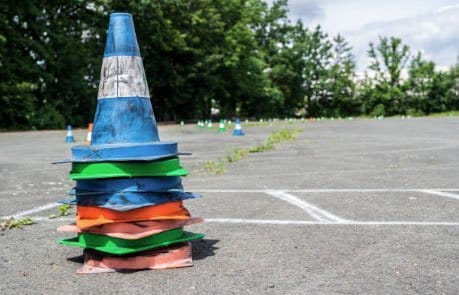
The first day of the course, everyone showed up in their gear and checked in. DO NOT BE LATE.
Once you’ve checked in, take the opportunity to network with people in your group and instructors as you will be spending a lot of time with them over the next two days.
We had three instructors who were all very knowledgeable. My instructor was an RCMP (eh?) officer with more years of experience riding a motorcycle than I had been alive. His attitude when riding a motorcycle was strict but necessary. “If you make a mistake, you will die” type of teaching. This is a necessary truth for anyone who is looking to ride a motorcycle.
Training
The fun began. We picked out the motorcycles that we would be driving for the weekend. I picked out a 2019 Honda Grom. 124.9cc of pure air cooled motorcycle. The motorcycles were small, for good reason, but could easily be opened up on the road to achieve average road speeds.
The first day of training was a mixture of the following:
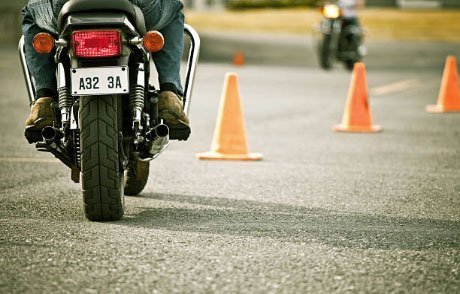
- Hand signals for the instructors.
- Shoulder check – Shoulder check – Shoulder check
- Mirror, shoulder check, signal, shoulder check, move.
- LOOK WHERE YOU WANT TO GO.
- How to get on a motorcycle.
- What are the controls and where are they located.
- What do the controls do.
- How to turn on and off the motorcycle.
- How to work the clutch.
- Friction point.
- How to switch into first gear and neutral.
- Using the clutch to move.
- Stopping with rear and front brake.
- Moving with throttle.
- Squeezing the gas tank.
- Turning. (Left, Right and U turn both ways.)
- Countersteering.
- Switching from first to second gear.
- Group Riding.
- Hill starts.
- Emergency braking.
- Emergency avoidance.
- Maneuvering slowly with clutch and rear brake.
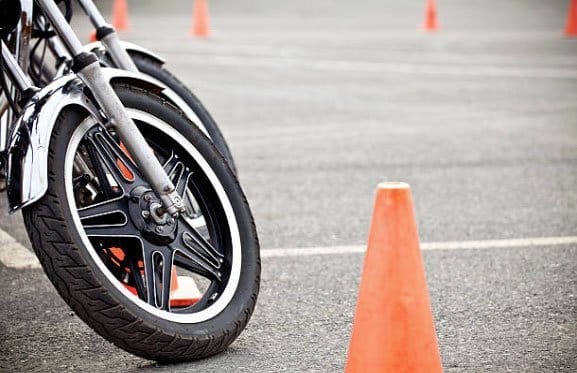
This was fun and exciting. Having the opportunity to learn a new skill and being taught by someone with a lot of experience was excellent.
*You will go to bed mentally and physically sore. You have to pay attention at all times. Using the clutch, brakes and gears activates muscles you typically don’t use on a daily basis. Take a pain reliever before going to bed.*
Once we were done on the course, we moved into the classroom.
In the Classroom
The classroom or theory portion of the motorcycle was helpful as well. There were quite a few items that were discussed including:
- Rules of the road.
- What to expect from your road test.
- Where to book your road test.
- How to fail your exam.
- Feedback with the students.
- Question period.
Pay attention and don’t be afraid to ask questions. You’ve put your money into this and you need to make sure you get the most out of your experience.
Pay attention and don’t be afraid to ask questions. You’ve put your money into this and you need to make sure you get the most out of your experience.
Get a good night sleep and get ready for day 2.
Testing
The second day was here and today was a review of what we had already learned along with the final test and road cruise.
The review was fairly simple and then we had the opportunity to go through what the exam was.
Our exam included the following:
- Slow move between narrow cones for 4 bike lengths. Testing stability.
- Serpentine exercise. Testing where you’re looking and turning ability.
- Left turn between cones. Signal, turn, stop. Testing use of controls.
- Emergency maneuver. Get up to 20km/h avoid left or right. Testing control and countersteering.
- Emergency braking. Get up past 20km/h and brake within box. Testing braking ability.
Road Experience
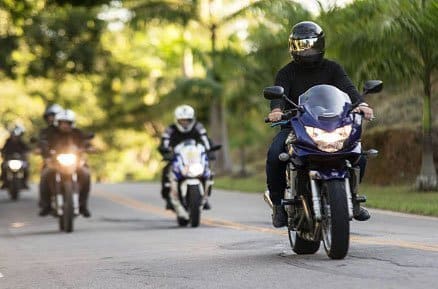
After we passed the exam, we were able to go on the public road with an instructor. We were suited up with communication devices. These were radios in the helmets where the instructor could talk to us but we couldn’t talk back. Once we had the experience in the course, it was easy to get on the road and go for a ride.
This was, by far, the best part of the entire course. When you’re able to get your motorcycle up to road legal speeds and ride with a group, it’s a whole new experience. The feeling is immeasurable and was well worth the 2 days.
After the course was over, we chatted about how to purchase a motorcycle, where to go, insurance and a few other final pieces of information. We also got a cool t-shirt and the ability to come again to any of their courses to review for free!
Can anyone learn how to ride a motorcycle?
Yes. I believe with enough time on a motorcycle, anyone can learn how to ride one. This is why there are motorcycle safety courses around the world to help people learn.
It doesn’t only help you learn to ride a motorcycle but also allows you to become a better vehicle driver. Situational awareness can be taught and when it’s life or death on the roads, you have to become better at paying attention.
Should you take a Motorcycle Safety Course?
Yes! A thousand times YES!
Do you want lower insurance premiums? How about knowledge that will last a lifetime? Better yet, learn how to avoid a hospital visit or a mad friend when you wipe out on their motorcycle.
Do yourself a favour and take the course. You will thank me later!
